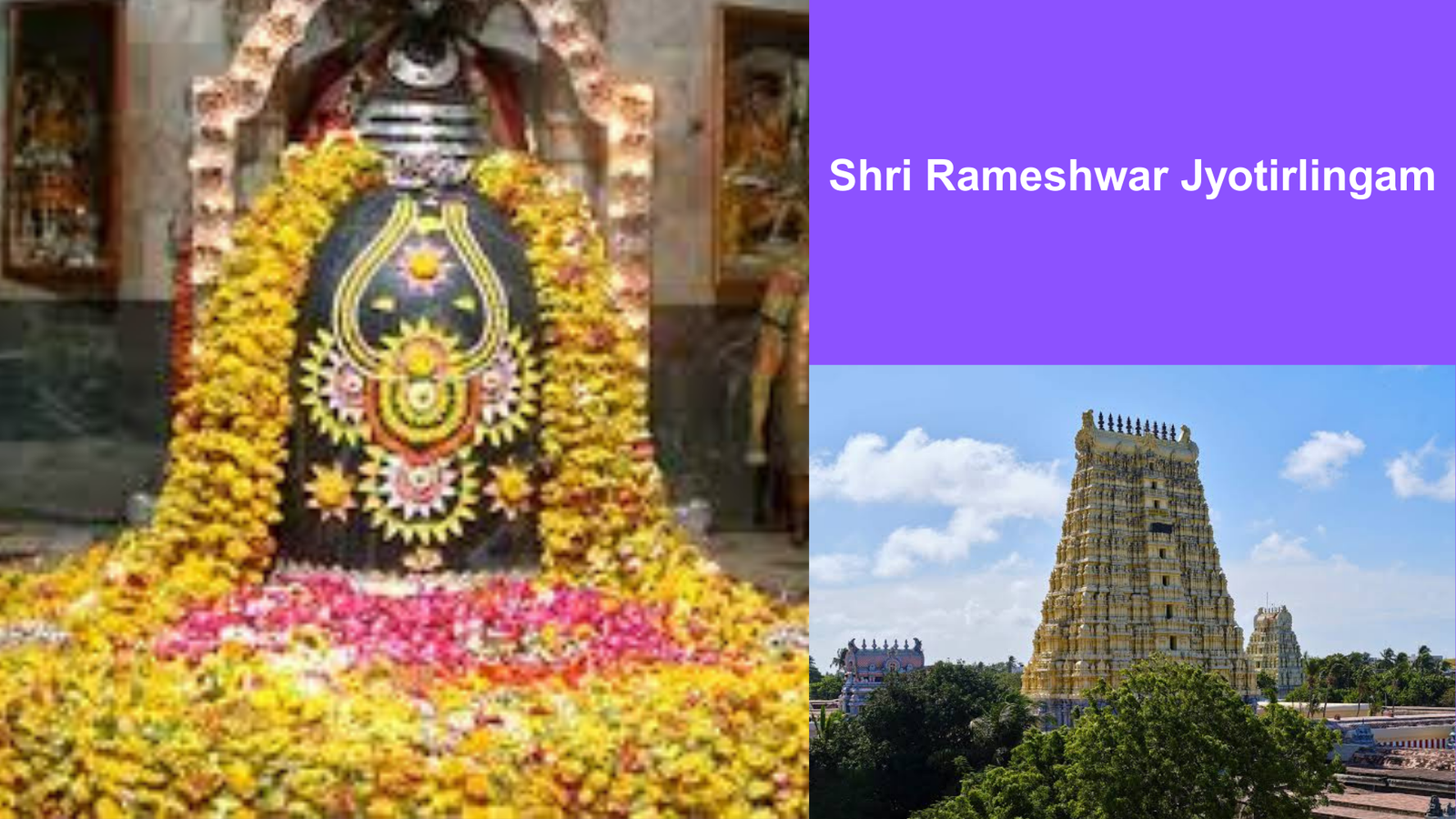Shri Rameshwar Jyothirlingam is a Symbol of Mythological Heritage
Among the twelve sacred Jyotirlingams of Lord Shiva, Shri Rameshwar Jyotirlingam holds a unique and revered place in the hearts of millions of devotees. Located on Rameswaram Island in Tamil Nadu, this temple is not just a site of divine worship but also a monumental symbol of India’s spiritual, mythological, and architectural heritage.
The temple is deeply connected to the epic Ramayana and is regarded as the southernmost Jyotirlingam in India.
This guide provides a complete overview of Shri Rameshwar Jyotirlingam, including its history, mythology, architecture, rituals, festivals, travel guide, nearby attractions, and useful tips for devotees and travelers.
Historical Background of Shri Rameshwar Jyotirlingam
The origins of Shri Rameshwar Temple are rooted in both mythology and history. The temple is believed to have been consecrated by Lord Rama himself after his victory over Ravana in Lanka.

According to legends, Rama worshipped Lord Shiva at this very spot to absolve himself of the sin of killing Ravana, a great devotee of Lord Shiva.
Also read: Shri Bhimashankar Jyotirlingam: A Complete Guide to the Sacred Shiva Temple
Historically, the temple’s construction began in the 12th century CE and continued for several centuries. Contributions from the Pandya dynasty, the Jaffna kings of Sri Lanka, and later rulers such as the Sethupathis of Ramanathapuram added to its grandeur.
Today, the temple stands as one of the largest and most magnificent temples in India, attracting pilgrims from all over the world.
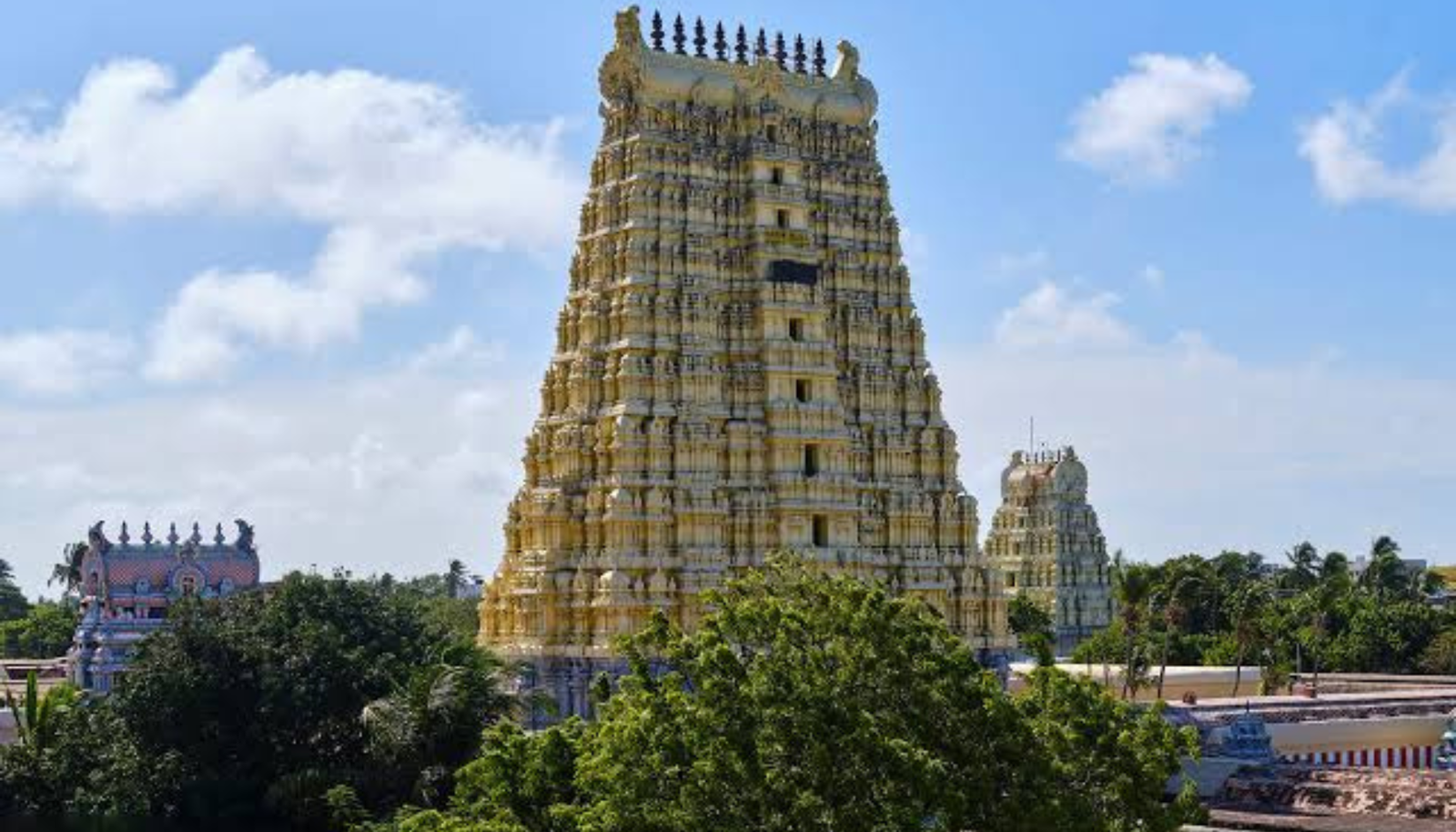
Mythological Significance
The story of Shri Rameshwar Jyotirlingam is inseparably tied to the Ramayana:
1. Rama’s Devotion
After defeating Ravana, Lord Rama wished to atone for killing a Brahmin. He prayed to Lord Shiva for forgiveness. Rama’s devotion and humility elevated this temple’s sanctity.
2. The Story of the Lingam
Rama instructed Hanuman to bring a Shiva Lingam from Mount Kailash. As Hanuman was delayed, Sita made a Lingam out of sand, which Rama worshipped. This Lingam, known as Ramanathaswamy Lingam, is enshrined in the temple.
Later, Hanuman returned with another Lingam, which was also installed. Both Lingams remain in the temple, making it unique.
3. Sacred Waters
The temple is surrounded by 22 holy wells (Theerthams), each believed to have curative powers. Taking a dip in these waters is considered purifying before offering prayers to Lord Shiva.
Architectural Grandeur
The Shri Rameshwar Jyotirlingam temple is renowned for its Dravidian architectural style and is one of the largest temple complexes in India.
Temple Corridors: The temple boasts the longest corridor in the world, stretching over 1,200 meters with beautifully carved pillars (1,212 in total). Walking through these corridors is a divine experience.
Gopurams (Gateway Towers): The temple has magnificent eastern and western gopurams that rise above 50 meters.
Sanctum Sanctorum: The garbhagriha houses the two Lingams – Ramanathaswamy Lingam (sand Lingam) and Viswanathar Lingam (Hanuman’s Lingam).
Theerthams (Sacred Wells): 22 wells are spread across the temple premises. Each well has different tasting water despite being located close together.
Rituals and Worship Practices
Devotees follow a structured ritual while visiting the temple:
1. Holy Bath in 22 Wells – Pilgrims first bathe in the sacred Theerthams.
2. Abhishekam to the Jyotirlingam – Special offerings include milk, honey, sandalwood paste, and bilva leaves.
3. Darshan of Both Lingams – Devotees worship both the Sita-made sand Lingam and Hanuman’s Lingam.
4. Special Pujas – Rudrabhishekam, Shivalinga Archana, and Laghurudra Homam are conducted regularly.
Timings
Morning: 5:00 AM – 1:00 PM
Evening: 3:00 PM – 9:00 PM
Major Festivals Celebrated
1. Maha Shivaratri
The grandest celebration at the temple, featuring night-long bhajans, Rudrabhishekam, and cultural events.
2. Navratri and Ram Navami
Celebrated with processions and rituals highlighting Rama’s devotion to Shiva.
3. Margazhi Festival (December–January)
Devotees chant hymns, sing devotional songs, and participate in special poojas.
4. Aadi Amavasya
A significant day for performing ancestral rituals at Rameshwaram.
Spiritual Importance of the Temple
- One of the Twelve Jyotirlingams – Visiting Rameshwar completes the cycle of Jyotirlinga darshan for many devotees.
- One of the Char Dhams – Alongside Badrinath, Dwarka, and Puri, Rameshwaram is part of the four most sacred pilgrimages in India.
- Liberation from Sins – Bathing in the 22 Theerthams and worshipping the Lingam is believed to absolve all sins.
- Connection to Rama – It remains the only Jyotirlingam directly linked to Lord Rama, blending Vaishnavism and Shaivism traditions.
How to Reach Rameshwaram
1. By Air
The nearest airport is Madurai Airport (174 km away). From there, taxis and buses connect to Rameshwaram.
2. By Train
Rameshwaram has a railway station that connects to Chennai, Madurai, Trichy, and Coimbatore. The Pamban Bridge rail journey is a must-experience.
3. By Road
Rameshwaram is well-connected by bus from Tamil Nadu’s major cities like Chennai, Madurai, and Trichy.
4. By Sea
Though not a regular option, boats and ferries sometimes operate near Dhanushkodi.
Nearby Attractions
1. Dhanushkodi

The mystical ghost town is located at the tip of Rameshwaram Island, where the Bay of Bengal meets the Indian Ocean.
2. Pamban Bridge

India’s first sea bridge, offering breathtaking views.
3. Agni Theertham
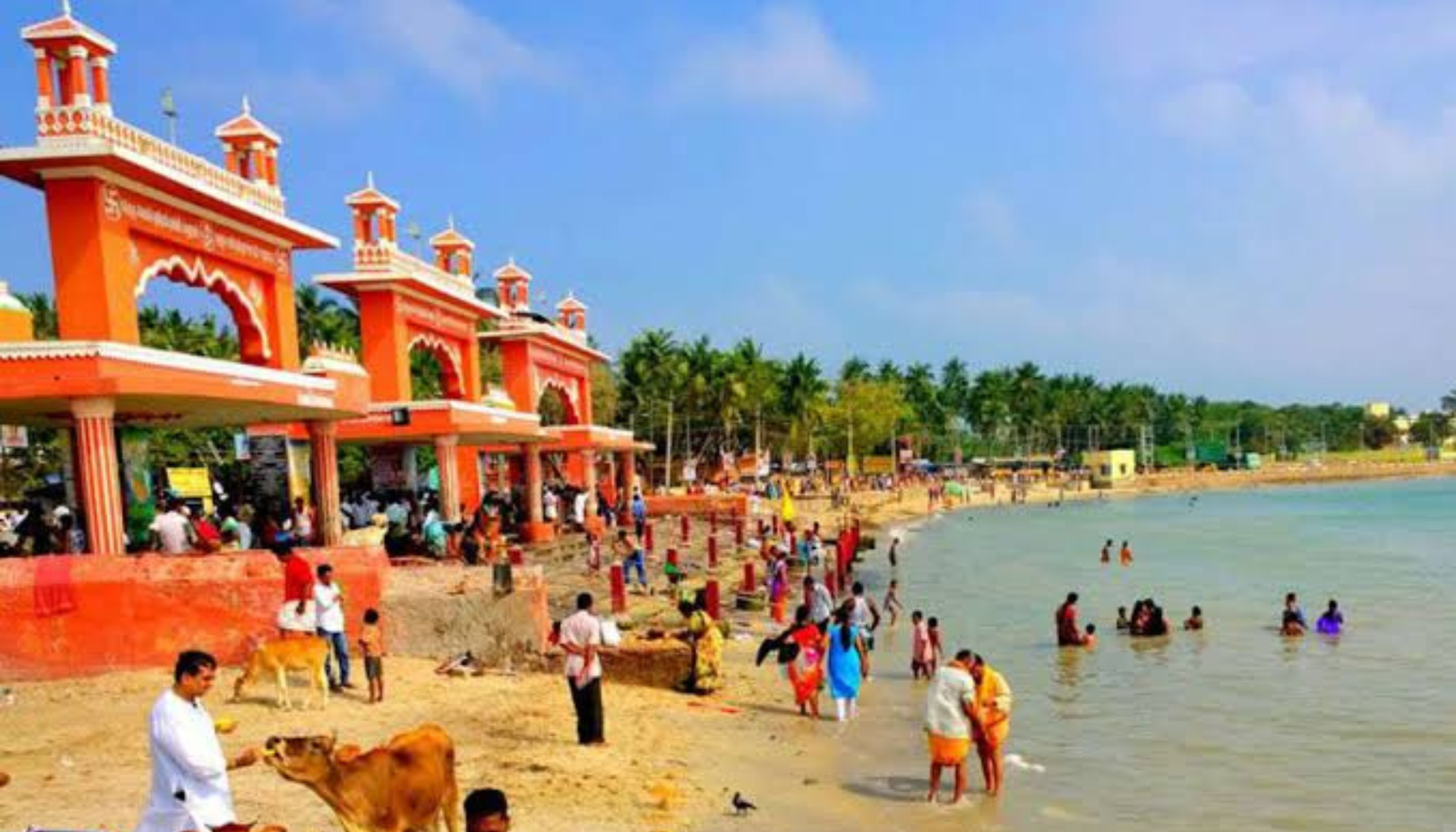
A sacred beach where devotees take a holy dip before visiting the temple.
4. Kothandaramaswamy Temple
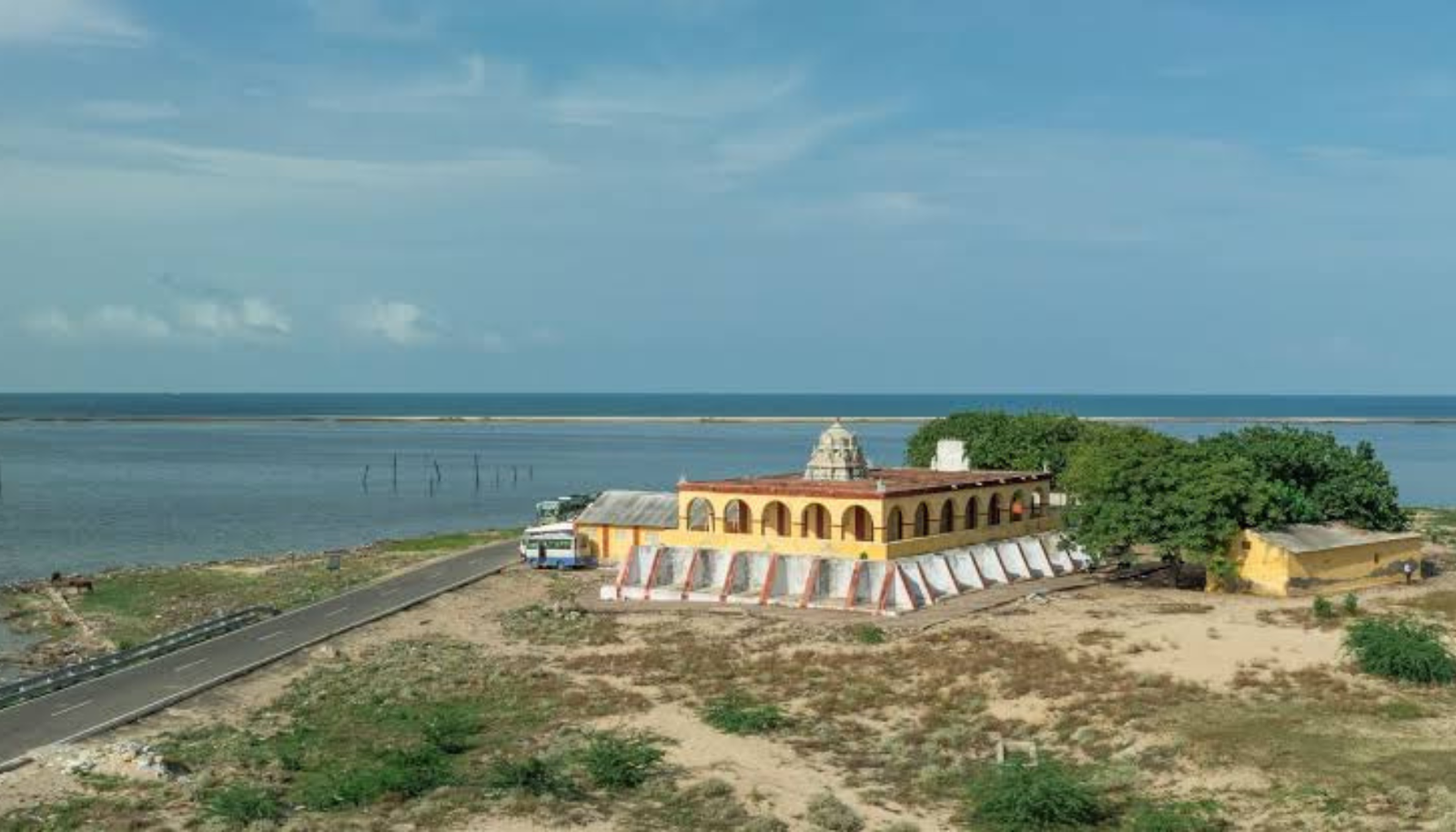
Associated with the surrender of Vibhishana to Rama.
5. Adam’s Bridge (Ram Setu)

The legendary bridge believed to have been built by Lord Rama’s Vanara Sena.
6. Gandhamadhana Parvatham
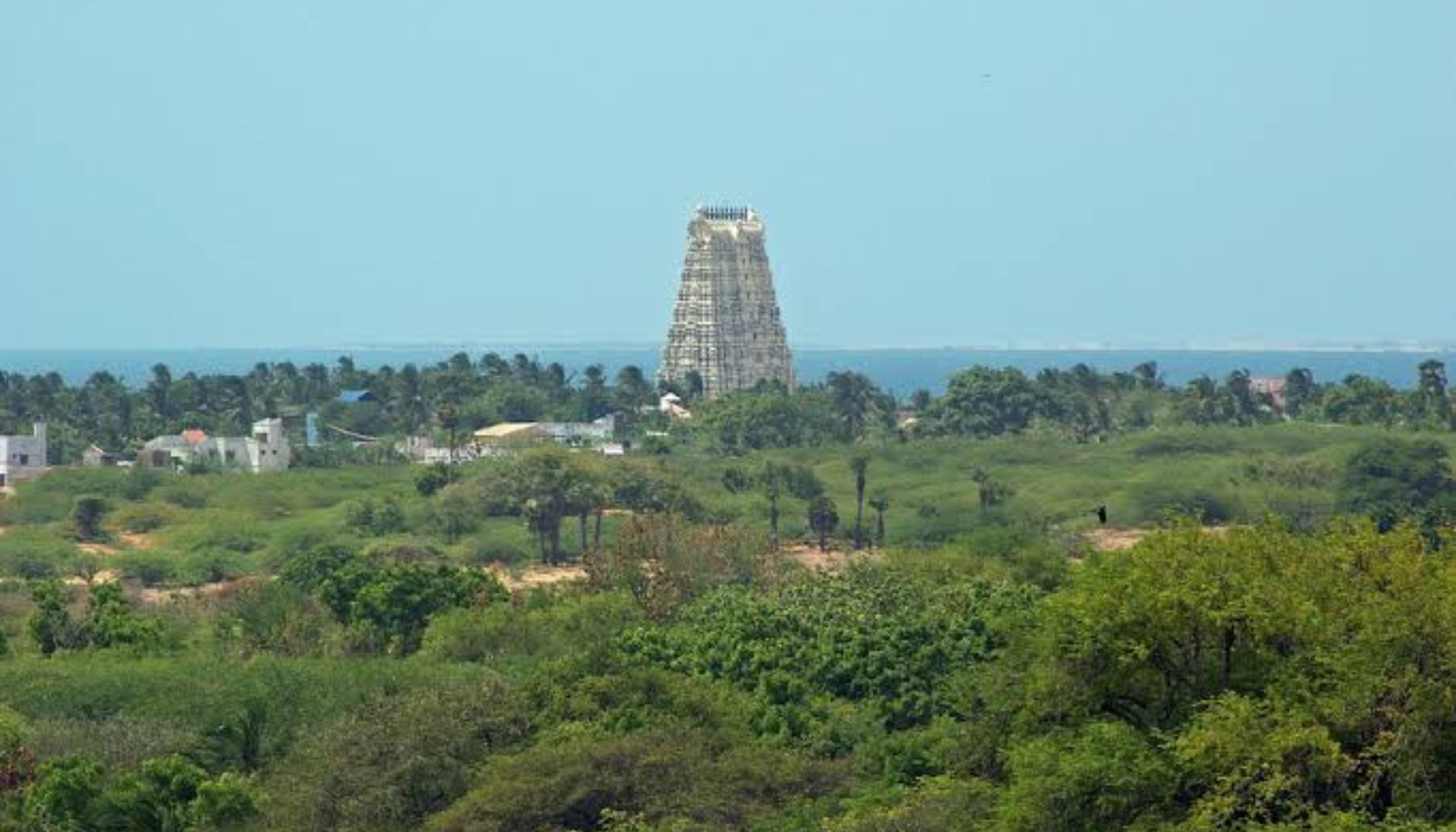
A hillock offering panoramic views of Rameshwaram and housing Lord Rama’s footprints.
Accommodation Options
Rameshwaram provides a wide range of accommodations:
Budget Hotels & Dharamshalas – Affordable options for pilgrims.
Mid-range Hotels – Enjoy a comfortable stay near the temple with basic amenities.
Luxury Hotels – Premium options for those seeking a more relaxed pilgrimage experience.
Travel Tips for Devotees
1. Perform the holy bath in the 22 wells before darshan.
2. Carry light cotton clothes as the climate is generally hot and humid.
3. Be prepared for long queues during peak festivals like Shivratri.
4. Respect the temple dress code – modest attire is recommended.
5. Book accommodation in advance during festive seasons.
The Shri Rameshwar Jyotirlingam temple is not just a place of worship but a journey into the depths of India’s spiritual, mythological, and cultural legacy. With its deep ties to the Ramayana, architectural grandeur, sacred rituals, and its place as one of the Char Dham and Jyotirlingams, this temple remains an unmissable pilgrimage for every devotee.
Whether you are drawn by faith, history, or the sheer beauty of the temple and its surroundings, a visit to Rameshwaram Jyotirlingam will leave you with a sense of peace, fulfillment, and spiritual upliftment.
Follow svhubstuff for more curated travel and tourism updates!!


